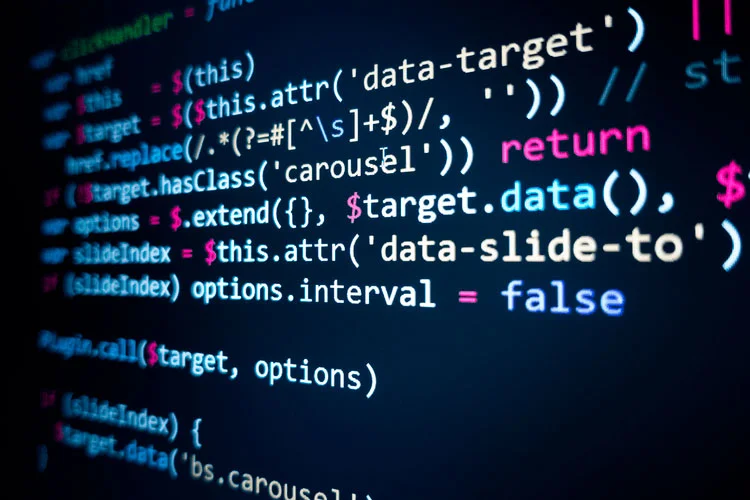AR, much like metaverse, is expected to be a crucial aspect of Web3, but it needs to reflect Web3 as a whole. AR has been a component of the wider digital discussion for several years. However, in recent times, it emerged as a configurable intermediate capable of generating a higher return for both consumers and companies. Users can communicate with one another through trustless networks without the necessity of a trusted intermediary.

Web3 is about decentralizing control and access, while allowing content creators to own their content — and much of what is accompanied by it (revenue, data, etc.). Web3 services introduce integrated technologies, enabling developers to access new online landscapes. Many elements contribute to Web3’s infrastructure, notably real-time 3D (RT3D) augmented, virtual, mixed reality (AR/VR/MR) immersive experiences. No single entity will control the flow of information or „pull the plug“ and kill a network, simply because can as they own the hardware it’s running on. Because it’s thought that it will be the third major evolution of the internet, after the worldwide web (web1) and the user-generated web (web2, or social media). Lamina1 has already made significant progress, with nearly 50,000 participants engaging in its Testnet and Betanet phases.
Metaverse Marketing in Metaverse
Meaning, all in-game currencies and other assets are locked to one’s account. OpenSea, currently the largest NFT marketplace, is fundamentally a centralized marketplace that simply facilitates transactions on the blockchain. Coinbase is another example of a centralized exchange that enables transactions of cryptocurrencies.
The term “immersive internet” refers to what I believe will be the next stage in the evolution of the online environment. It’s about moving beyond flat web pages, images and videos to create experiences that are more engaging, as well as conducive to shared interaction and collaboration. It will include technologies such as augmented reality (AR and virtual reality (VR). Carraro LAB’s new lines vr technology development of research are today augmented reality on the Internet and 3D Web Design. We are moving towards the SPATIAL WEB, able to offer experiences both in physical worlds digitally mapped and in virtual worlds. One of the first Italian applications of the spatial web is the XR website „stelvioexplorer.it“, with functions of augmented interaction with the physical visitor center of the Stelvio park.
Get ready for Neal Stephenson’s open metaverse as Lamina1 unveils Avalanche Web3 plans
Stephenson sprang into action to help create the open metaverse after watching walled gardens like Meta announce their interest in building the metaverse. He cofounded Lamina1 in June 2022, and this announcement is the first sign of the progress the company has made in creating infrastructure. The partnership aims to expand Avalanche’s existing creator ecosystem across various domains, including indie gaming, music, film, fashion, art, and tastemaker experiences. Ava Labs will provide https://www.globalcloudteam.com/ technical and other support to Lamina1, leveraging its expertise in Consensus layer scalability, speed, and reliability. Founded by Stephenson, crypto pioneer Peter Vessenes, and immersive entertainment executive Rebecca Barkin, Lamina1 seeks to foster an open, decentralized, and creator-friendly metaverse. Now as breathless as that sounds, it doesn’t mean Stephenson’s virtual world of Snow Crash — the 1992 novel in which he coined the term “metaverse” — is coming soon.
He said you have to pay attention to the infrastructure to enable those people to do their work. Every VR solution has its unique benefits and some disadvantages for certain purposes, yet, in the end, every technology is innovative and poses a number of benefits. We usually use Augmented Reality to place 3D machinery into the real world.
Made for business, „not consumers“
But this launch of Lamina1’s Layer 1 blockchain on Avalanche is a necessary part of the infrastructure. Virtual Reality is an immersive interactive multimedia or computer-simulated reality. A user watches a VR application with VR glasses that are connected to a computer. As such, you can largely regard Web3.js as your interface between JavaScript and the smart contracts of Web3 apps. Essentially, libraries like Web3.js allow you to interact with either a remote or local Ethereum node.

For this reason, many companies use this solution for Virtual Reality training, education applications, and interactive 3D presentations, especially when safety and continuous production pipelines are a concern. In Web2, a transaction—whether it’s an exchange of money or information—relies on two parties (and usually a central facilitator as well) trusting each other with the information that’s being shared. Instead, the technology is designed so that a transaction goes through only if certain criteria are met and data are verified. Users must render commonplace tasks in 3D in order for the metaverse to function as intended. In the event that this takes place, participant interaction will In order to facilitate secure transactions using NFTs or other assets.
What’s the Difference Between VR, AR, MR, Web3D, and WebVR?
Metaverse services like Meta’s Horizon, the upcoming Pico Worlds, and The Sandbox features Web3 UGC. Enterprise clients adopt Web3 immersive services to serve modern remote work environments. Additionally, Metaverse platforms like Engage XR and Virbela focus on enterprise collaboration. Reach out to us anytime and lets create a better future for all technology users together, forever. Other major players, like Google, are investing heavily in the movement of creators.

It is a virtual world that uses Blockchain technology to give users ownership and control over virtual land and buildings. Users can buy, sell, and trade their virtual assets, and they can use them to create unique and immersive experiences. Decentraland also uses Blockchain technology to create secure and verifiable digital identities for its users. The platform aims to create an interoperable ecosystem of open metaverse tools and experiences using Avalanche’s powerful consensus and core technology.
Web 3.0 – Virtual and Augmented Reality on the Internet
A surprising 47% of respondents say that emerging technologies are already delivering enhanced stakeholder trust — and that this value (enhanced trust) is measurable. To learn more about what is shaping technology transformations, we launched our Emerging Technology Survey. Navas said that the whole point of the metaverse is to have it be decentralized so no single party controls it. It would be more like a public permissionless technology, like Avalanche, he said.
- Gaming, social media, shopping, and other experiences are all part of the metaverse.
- This simply involves conducting transparent exchanges of financial products with the aid of blockchain, without assistance or authentication from third parties such as banks or the government.
- The virtual audience might enjoy the show via VR headsets, while in-person attendees could put on AR glasses and see the virtual attendees standing in the audience alongside them.
- Much of Web1 was built using “open protocols,” which are ways of exchanging information that can be used by anyone, rather than just one entity or organization.
- It is convenient to have interlinked accounts that cover all user experience.
The cryptocurrency market for bitcoin is one of the more successful instances. On the other hand, tech behemoths are beginning to reformat or are attempting to purchase metaverse businesses in order to take control of this realm. However, analysts are reassured that government regulation of the internet would make it difficult for businesses to control the metaverse. Many technological breakthroughs made with blockchain bring the two technologies closer together. Every new blockchain idea is examined as a potential module incorporating the Web3.0 engine to drive the metaverse’s products and services.
